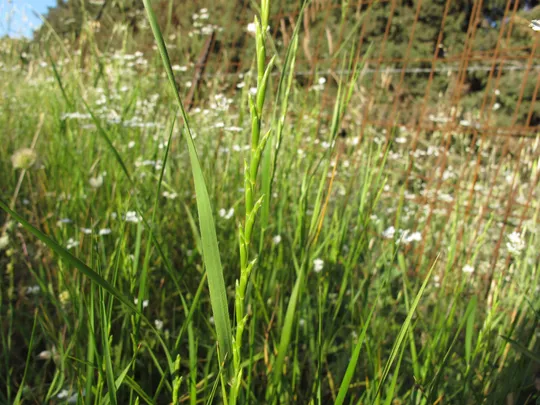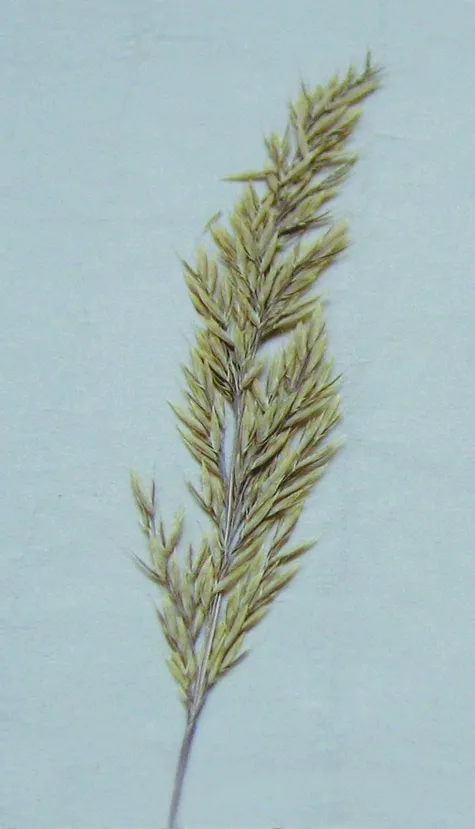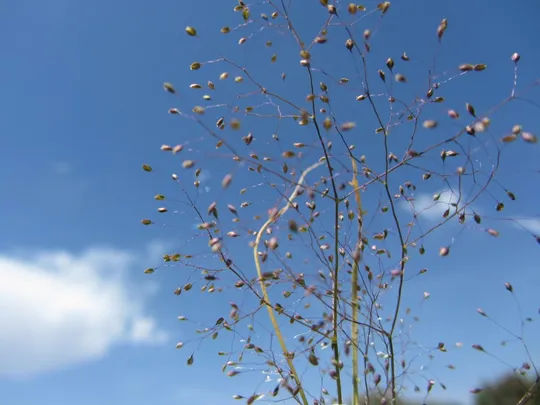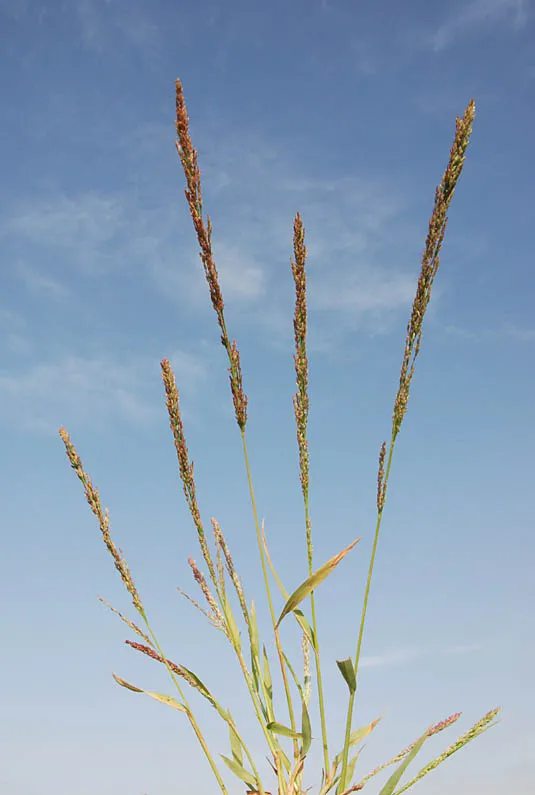Tall Wheatgrass
Elytrigia elongata
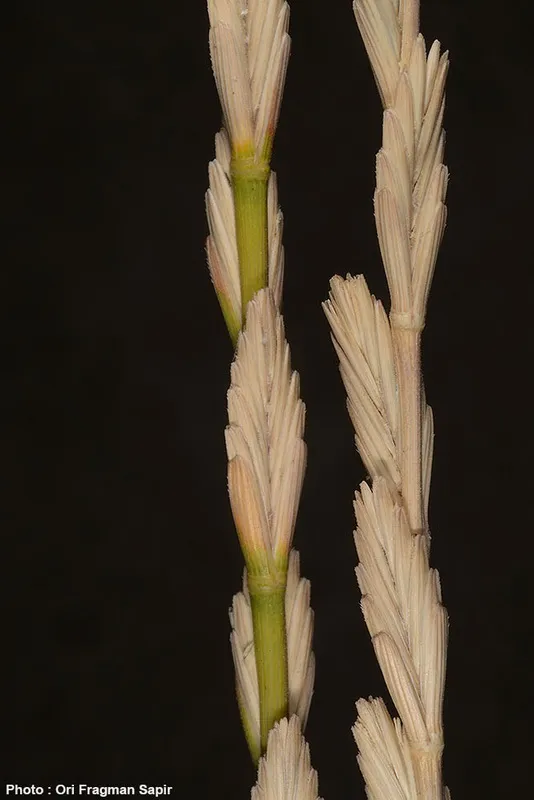
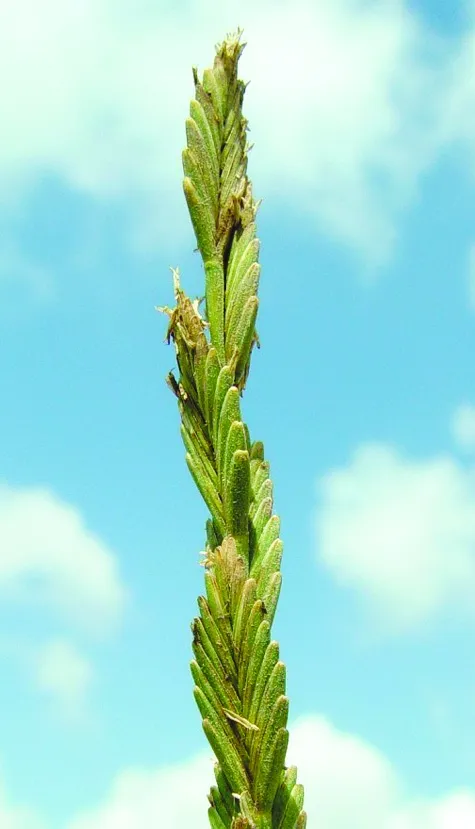
Elymus elongatus is a perennial
grass, 30-50 cm tall that grows in sparse clumps. The plant
is erect and has semi-rigid stems and leaves. Stems are rough and hairless
and its leaves are lanced and pointed. It has 10 mm greenish flowers. The
spikelet has 10-16 overlapping flowers. Spikelets are usually compressed
to the inflorescence stem and seem attached to it. Only during
flowering, for a few short days, do the spikelets spread
laterally by singular scaly swellings. The inflorescence glumes and the flower
palea lack awns. A single elongated oval seed is formed from each developing
fertile flower and remains confined in the dry inflorescence for an
extended period. E. elongatus flowers in April-June and
continues to bloom sparsely throughout the summer until the end of September.
Danin (2004) notes its presence in ten regions. According to the Jerusalem Herbarium and data from “ROTEM – the Israel Plant Information Center” it grows in 8 regions: Coastal Plain – Acre Valley, Carmel Beach, Sharon, and the Philistean Plain; and also in the Jordan Valley, the Bet She'an Valley, and in the Golan Heights. A single population grows in En Akev in the northern Negev Highlands. According to the collections in the Jerusalem Herbarium the species was once common in Coastal Plain water bodies and rare in the Jordan Valley water bodies. It was collected on a single occasion in the Jordan Valley near the Allenby Bridge (Danny Zohary 1941), and was recently found by Yair or in the salt marshes of the Phatsa'el Valley. In the Golan too there is only a single record (Quneitra 1984). Since the 1960s it has been extinct from the Sharon region, from the Jordan Valley and from the lower Jordan Valley. Today the largest population is found in Enot Gibton located in the Philistean Plain.
On the edges of salt marshes saline springs. According to the Flora it often grows in Juncus thickets which protect it from intensive grazing.
Four species of Elymus grow in Israel, and it is easy to distinguish between them according to their habitat: Elytrigia juncea grows on the coastal sands; Elytrigia elongata grows in marshes and on springs; Elymus libanoticus grows on wind swept rocks in the sub-alpine belt on Mt. Hermon.
Elymus libanoticus has slender bluish leaves. Elytrigia elongata has a larger number of flowers per spikelet than Elytrigia juncea and vivid green foliage. The genus Agropyron can be distinguished from the genus Lolium by the position of the spikelets relative to the stem: whereas in Lolium rigidum the spikelets are vertical, at right angles to the stem, in Agropyron species they are parallel to the stem axis. Accordingly the Lolium rigidum spikelet has only one glume while the Agropyron spikelet has two glumes (the inflorescence bracts at the base of the spikelet looks like palea).
• Drainage of wetlands is the main factor that threatens the populations of this species. The small number of individuals in most populations makes it vulnerable to extinction due to genetic factors and due to demographic and environmental accidents.
• The species distribution pattern is disjunct by nature of its habitat. Distances of 10 km and more between sites make gene exchange between populations impossible.
• Most of the surviving populations are very small; the estimated number of individuals is 1-30. Only in the Enot Gibton nature reserve south of Ramle is there a large and stable plant population; in 1992 some 1000 individual items were counted there, mostly growing in moist cavities, some of them in the shade of trees.
• Despite the rarity of the species in Israel, this species is probably not threatened globally. Its condition in Israel is poor when compared to that of other countries in the Mediterranean Basin, as in Israel wetlands and salt marshes have been almost completely destroyed.
The Kishon population, which was last observed in 1988, should be found or restored; the Na’aman salt marsh population which was last observed in 1992 should be saved and rehabilitated. . Rhizomes from the Enot Gibeton nature reserve should be transplanted to these sites.
Mediterranean Basin.
An erect perennial grass species, similar in appearance to Lolium rigidum but whose spikelet flower has two glumes. Grows near waterbodies and marshes,usually saline. Has apparently become extinct in recent years in the Acre Valley and the Sharon. The main population grows in the Enot Gibton reserve, and its habitat it seriously endangered. Should be prioritized for conservation.
לוריא, ר. 1983. סקר מורפולוגי, אקוגיאוגרפי וציטוטקסונומי של חמישה סוגים משבט החיטים בארץ: אלימוס (אגרופירון), ארמופירון, עקר, מלענת ובן שעורה. עבודת מוסמך, המחלקה לבוטניקה, האוניברסיטה העברית ירושלים.
שמידע, א. ורונטל, ב. 1985. צמחים רליקטים מחוף הים התיכון בעיינות מצוק הצינים בנגב. רתם 17:
19-26.
Current Occupancy Map
| 1000 squre meter pixel | 5000 squre meter pixel | 10000 squre meter pixel | |
|---|---|---|---|
| number of observations | 0 | 0 | 0 |
| in total pixels | 0 | 0 | 0 |
| Family | Gramineae |
| Classification | On the endangered species list |
| Ecosystem | Mediterranean humid |
| Chorotype | Mediterranean |
| Conservation Site | Enot Gibton Nature Reserve |
| Rarity |
1
2
6
|
|---|---|
| Vulnerability |
0
4
4
|
| Attractiveness |
0
0
4
|
| Endemism |
0
0
4
|
| Red number |
1
3.7
10
|
| Peripherality | N |
| IUCN category | DD EW EX LC CR EN VU NT |
| Threat Definition according to the red book | Vulnerable |
 Based on:
Based on:
